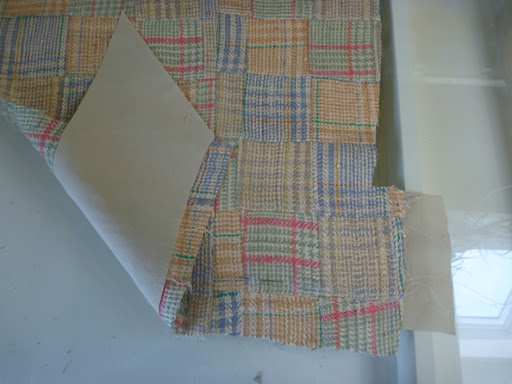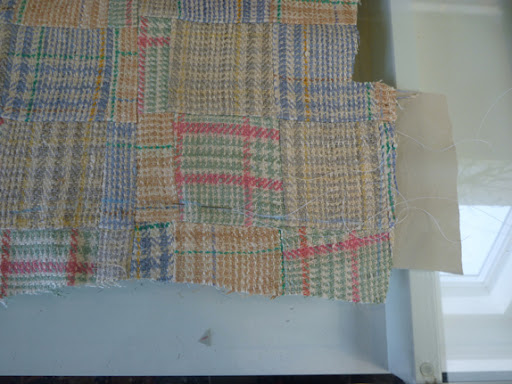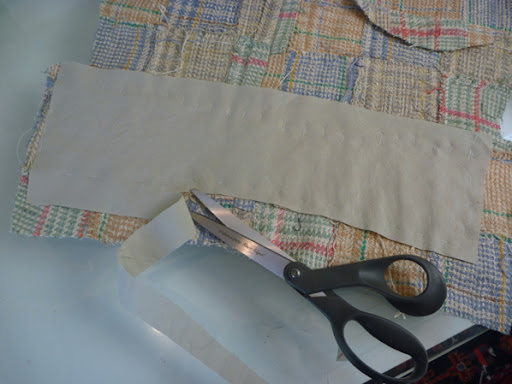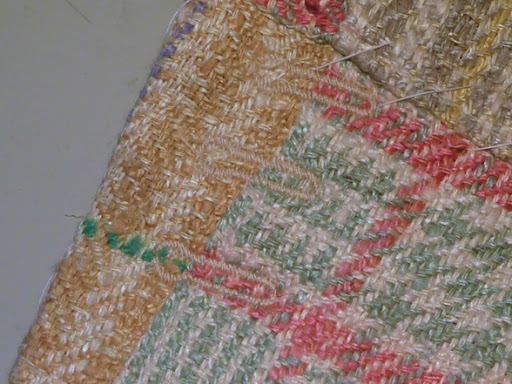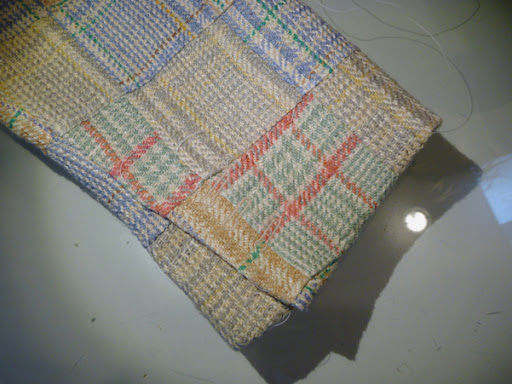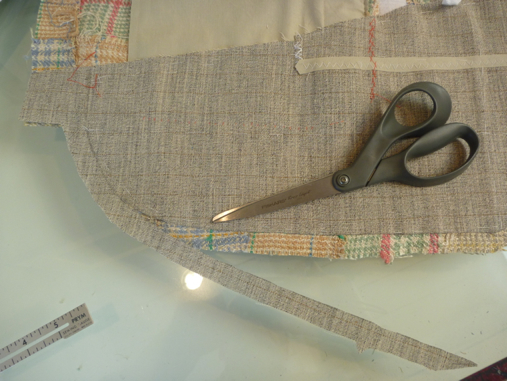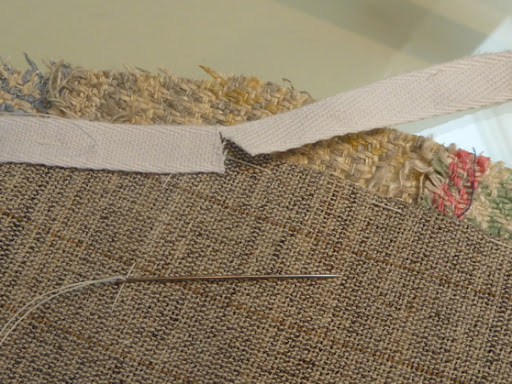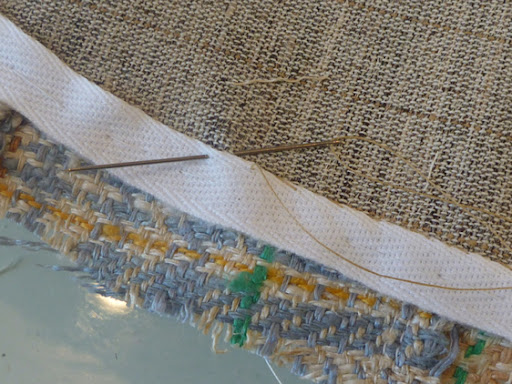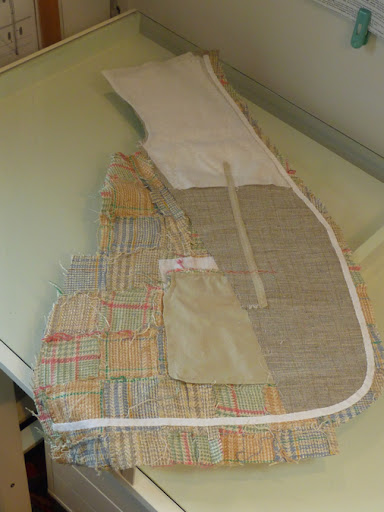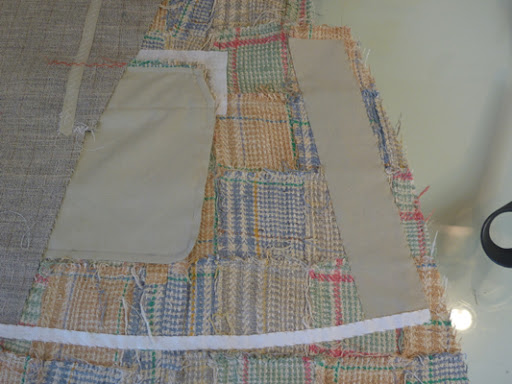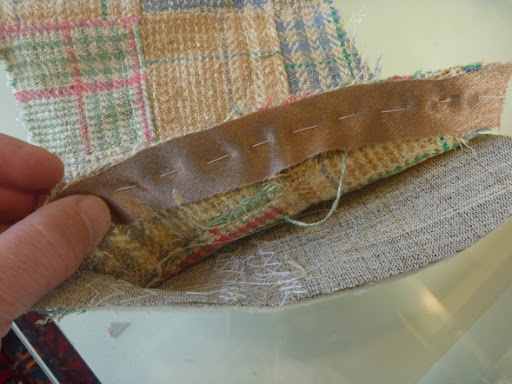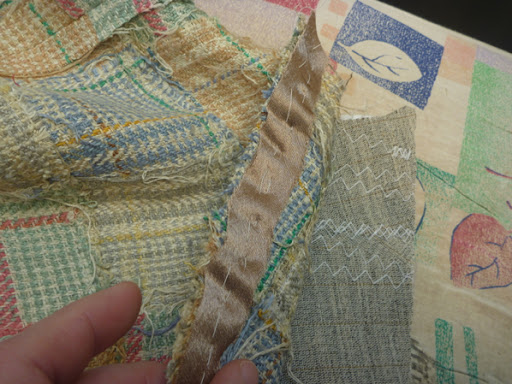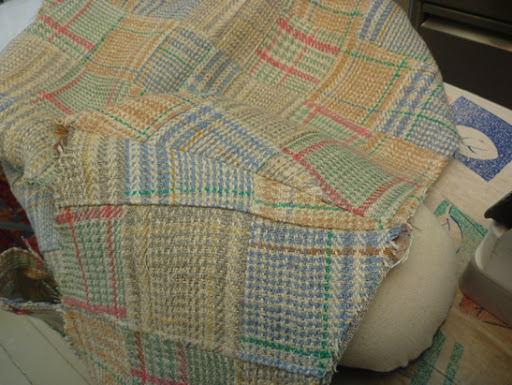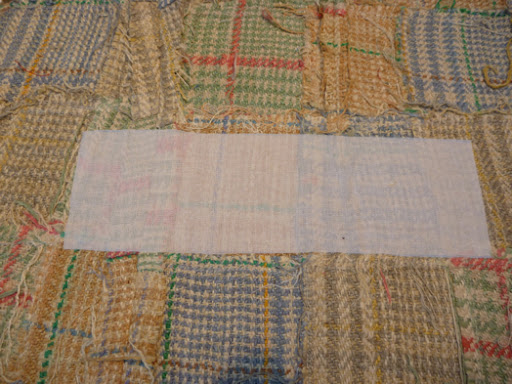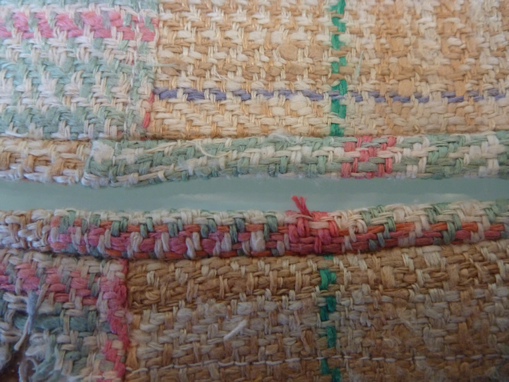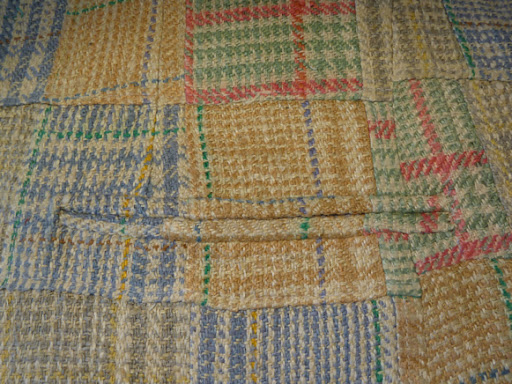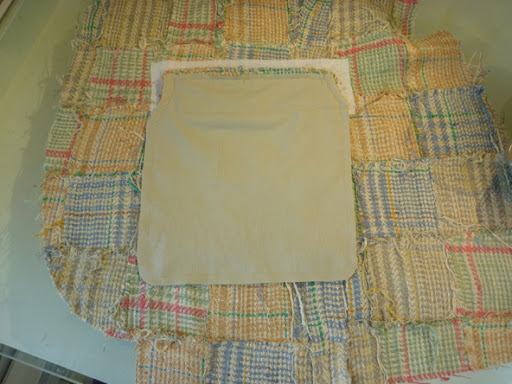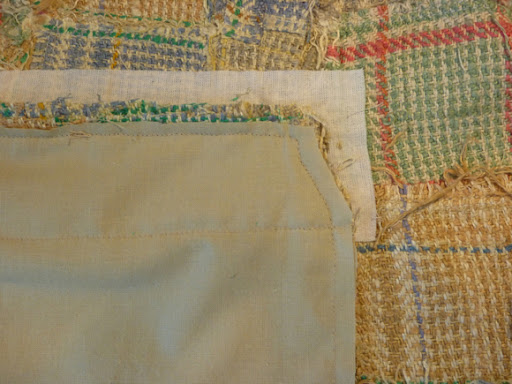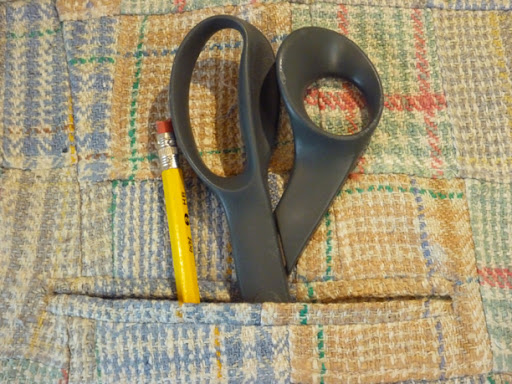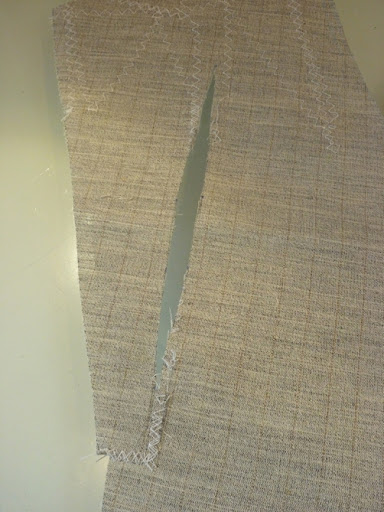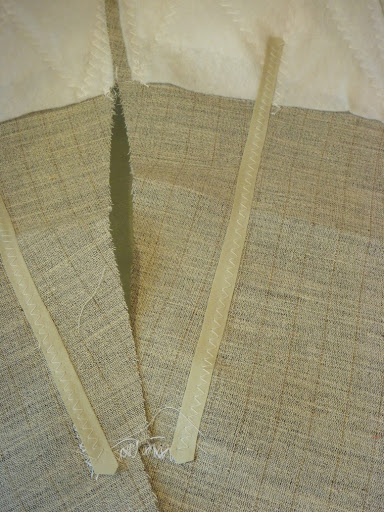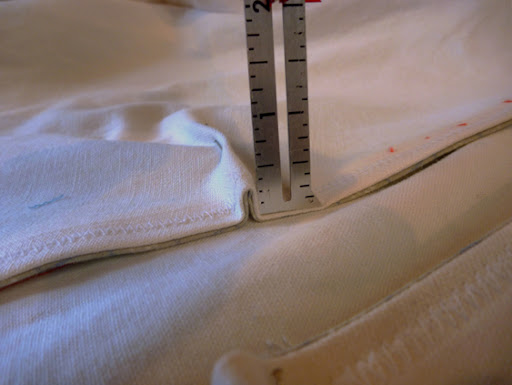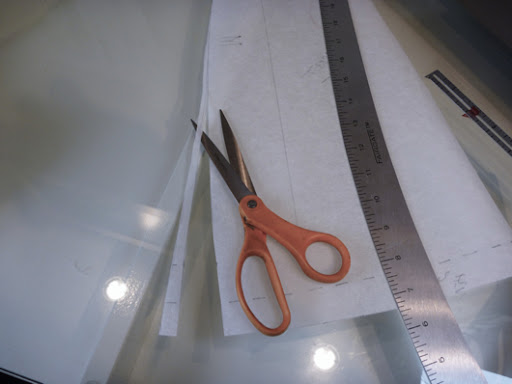Basically I use the jacket pattern pieces with a few adjustments here and there.
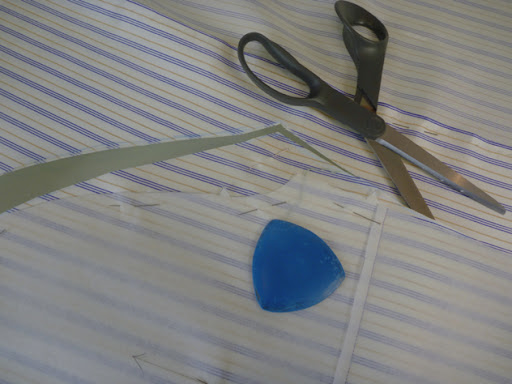
This is a technique I learned from the Japanese coat book. If you've ever ripped out the armpit of a jacket, this one's for you.
I add some extra fabric at the underarm seam of the sleeves, maybe about 1 1/2". I mark it out with chalk and cut. There's no need to be precise here. The extra fabric all gets eased in when the sleeve is set. This extra fabric provides some wearing ease at the underarm, a point that sees a lot of stress. I didn't do this on my frock coat and ripped out the lining the first time I wore it. Lesson learned -- the hard way!
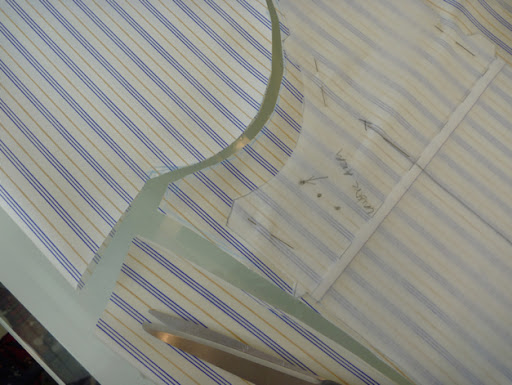
And here's what it looks like on the undersleeve. The rest of the pattern stays the same. Lop off the extensions for the vents and sew it up.
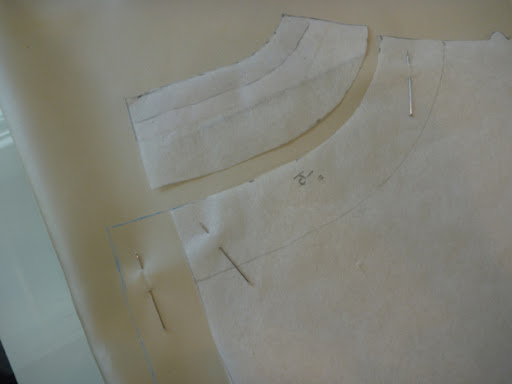
Wearing ease is also added at the center back seam. Here's the back pattern piece. I've lopped off a portion at the neckline which accounts for the facing. The center back seam is chalk marked out 1". This extra inch continues all the way to the waist, where it tapers back to the original pattern size. Stitch with the usual 5/8" seam allowance. It will become a pleat at the center back. This allows for movement across the back and shoulders, another high stress point.
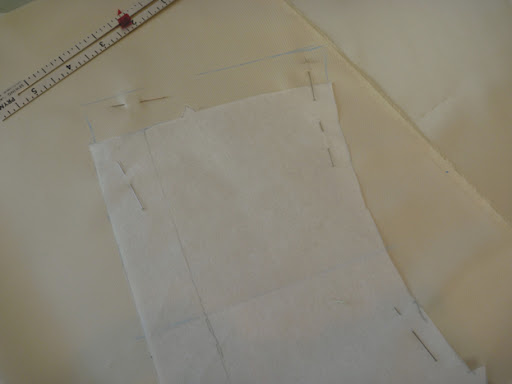
More ease is added at the lining fronts. The front shoulder seam is extended 1". A half inch pleat is basted across the lining approximately at the midpoint of the arm opening.
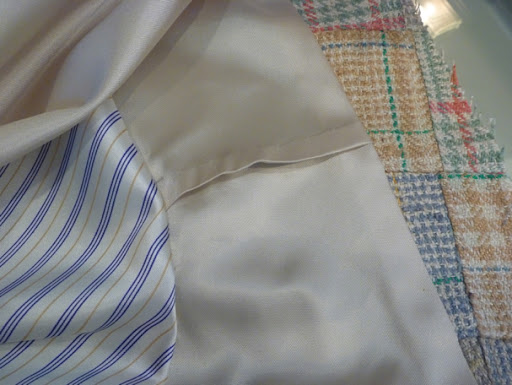
It will look like this after the lining is assembled.

I've worked a pocket into the left chest portion of the lining. Theoretically there should be a pocket on the right as well, but I'm right handed and never use the pocket on the right. Call me lazy, but I see no reason to add features that are never going to be used. This will be perfect for my phone. One of the great benefits of making our own clothes is to have the features we want.

This was a last minute addition to the lining. It occurred to me, while busily working along, that there was nothing to help preserve the shape of the upper back and the neckline. This is a piece of pocketing, cut using the back pattern piece, layered over the back lining. It's sewn into the shoulder seams and basted like hell around the neck opening (which has stretched, in spite of staystitching, and has frayed away to almost nothing!)
This is actually a technique from Edna Bishop's book on clothing construction, and oddly never mentioned by Cabrera. I should have anticipated using it, especially since there's no collar on this jacket.

So here's the completed lining. Not much to look at. What a mess!! Thank God none of this will be visible.
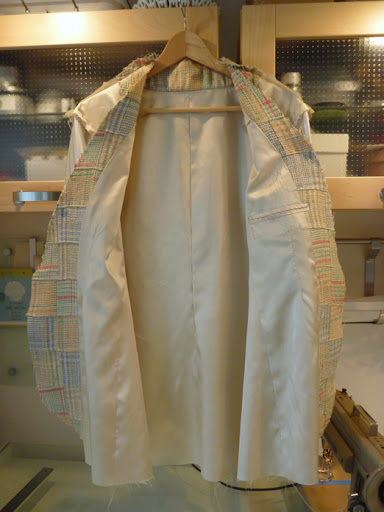
It's much prettier on the inside. I'm just glad to have this portion of the project behind me. I'll save attaching the lining to the jacket when I'm fresh.
